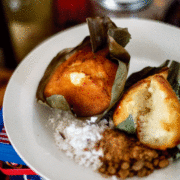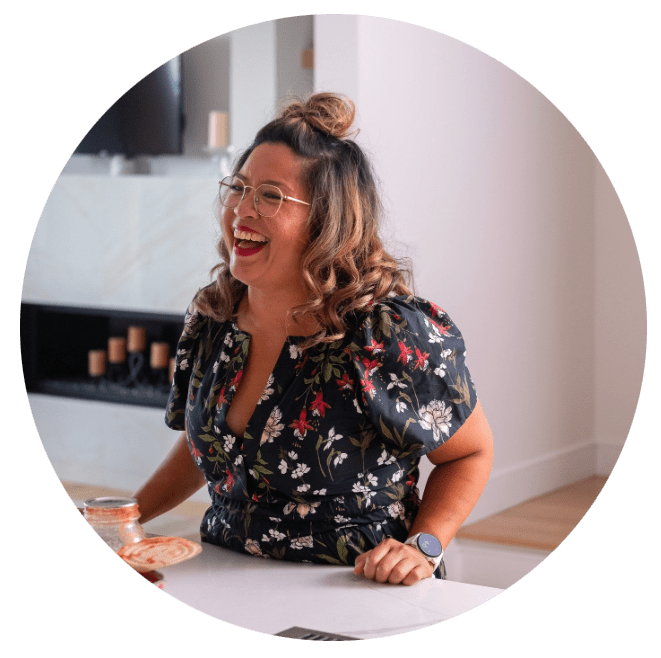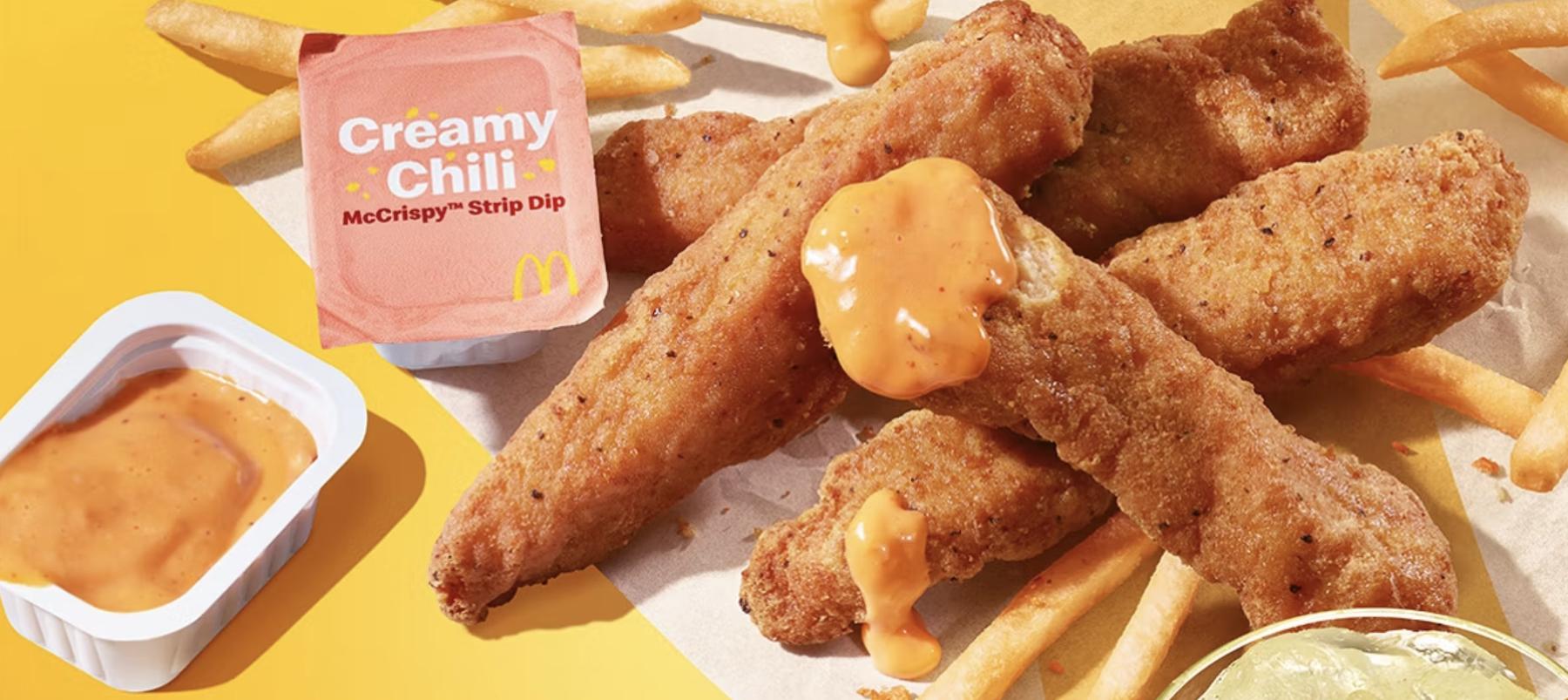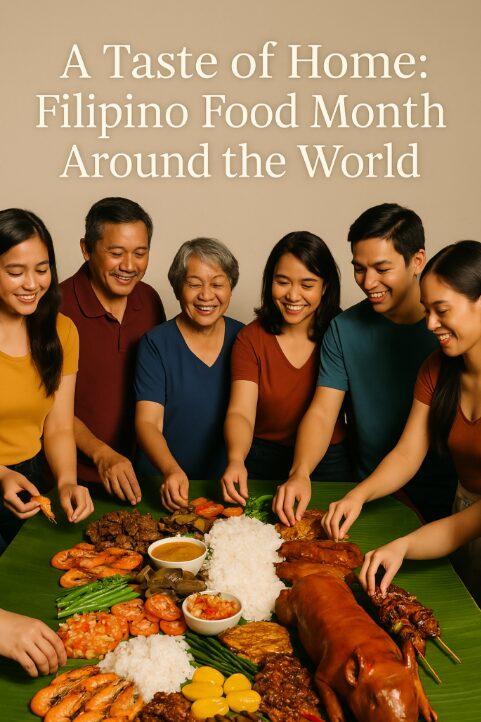
Excerpted from AMBOY: Recipes from the Filipino-American Dream © 2020 by Alvin Cailan. Photography © 2020 by Wyatt Conlon. Reproduced by permission of Houghton Mifflin Harcourt. All rights reserved.
Serves 6
The first time I met Auntie Cita, she brought this dish as a gift for my parents. It looked different from any other bibingka I had ever seen. It was unassuming: a round pie tin wrapped in banana leaves. I took a bite and it blew my mind. Every single mouthful had cream cheese. The texture was almost like cornbread with a really sugary topping. I tried it with a salted duck egg, and it was even better. The combination of salt, egg, and cream cheese was incredible.
Obviously and gratefully, my parents hired Auntie Cita. Over the years, she became the main caterer in our area. That bibingka with Philly cream cheese was her specialty. She made her own dry mix for the bibingka batter. She would line all these round cake molds with banana leaves, pour the batter in, and bake them off. Then, she would dip the bibingka in niyog, or freshly shaved young coconut meat, for that perfect textural touch.
On Saturday mornings, I was in charge of making niyog all day. Niyog as a word is kind of an onomatopoeia. It’s the sound you hear when you scrape the coconut against the grater. I would sit on this little wooden stool with a cowboy spur at the end. I’d scrape half a coconut on that spur, and the coconut meat would fly off into this little plastic basin. And I would do fuck tons of coco-nut. Sometimes, you look at these kids and you think, “How do they have so much energy?” I had that energy as a kid, so I would mow through cases of coconuts.
That niyog was the secret to this whole dish. You would dip the bibingka, scarpetta-style, into fresh, soft coconut meat. The bibingka was spongy, creamy from the cream cheese, and crispy from the crème brûlée–style topping. It was an explosion of flavor and texture. Auntie Cita made this dish every Saturday for six years. It made the house smell amazing.
Ingredients
- 1 large banana leaf (thawed, if frozen), cut into 2 (10-inch) rounds
- 5 tablespoons unsalted butter, at room temperature, plus more for greasing
- 1 cup glutinous rice flour, plus more for dusting
- 1 tablespoon baking powder
- ½ teaspoon kosher salt
- 1 cup muscovado sugar, plus more for sprinkling
- 3 large eggs
- 1 cup canned coconut milk
- ¼ cup heavy whipping cream
- 1 (8-ounce) block Philadelphia cream cheese, cut crosswise into 16 slices
- 1 cup Niyog (page 000) or any frozen shredded coconut
Directions
Preheat the oven to 375°F. Line a 10-inch springform pan with one of the banana leaf rounds. Butter the banana leaf and the sides of the pan, then dust with rice flour. Set the pan aside.
Sift together the rice flour, baking powder, and salt into a medium bowl. Don’t just dump in the dry ingredients. Sifting is a magical process that makes pastries fluffier and helps prevent unwanted lumps.
In the bowl of a stand mixer fitted with the paddle attachment, cream the butter and muscovado sugar at medium-high speed for about 5 minutes, until the butter is creamy white. You’re looking for buttercream icing texture. Scrape down the sides of the bowl.
Using the whisk attachment, add the eggs, one at a time, whisking at medium speed after each addition, until fully incorporated, about 1 minute. Scrape down the sides of the bowl after each addition. No gooey streaks; you want it to be one consistent mixture.
Returning to the paddle attachment, slowly incorporate the dry ingredients into the butter-egg mixture in three batches, mixing at medium speed. Make sure each is mixed well and incorporated before adding the next—about 15 seconds of mixing for each addition. Scrape down the sides of the bowl after each addition. With the machine running at medium speed, add the coconut milk and heavy cream in a slow stream. Beat until the consistency is like a pancake batter, about 2 minutes.
Pour the batter into the prepared pan; lightly tap the pan five times on the counter to distribute the batter and release any air bubbles.
Place the pan on a rimmed baking sheet and bake the bibingka until the top layer has set, 10 to 15 minutes. It should be pale and somewhat firm. Remove from the oven, top the pan with the second leaf round, and continue baking until the bibingka is set and just slightly jiggly in the middle, about 15 minutes. Adding the extra banana leaf will help flavor the bibingka and prevent the top from getting too brown.
Remove the pan from the oven; peel off and discard the banana leaf on top. Arrange the cream cheese slices decoratively over the top. Bake until a cake tester inserted into the center comes out clean, about 20 minutes. Let cool on a rack for 30 minutes. Release from the pan and peel off the leaf on the bottom; sprinkle more muscovado sugar over the top. Garnish with the niyog, slice into wedges, and serve.






